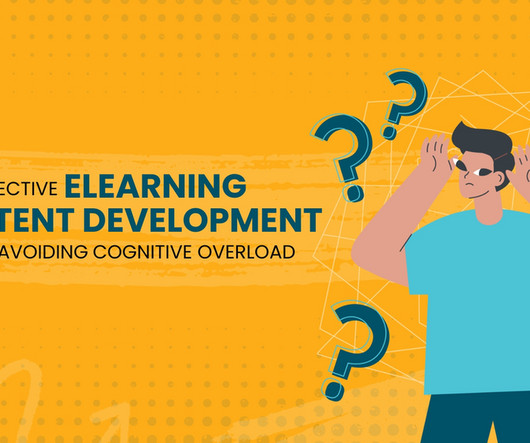Effective eLearning Content Development to prevent Cognitive Overload
Thinkdom
NOVEMBER 6, 2023
This means that when we are exposed to too much information, we experience cognitive overload, which hinders our learning and retention. This is what cognitive overload feels like. Your employees may face this in their eLearning courses, if they are exposed to an excess of information without proper structuring or pacing.




































Let's personalize your content